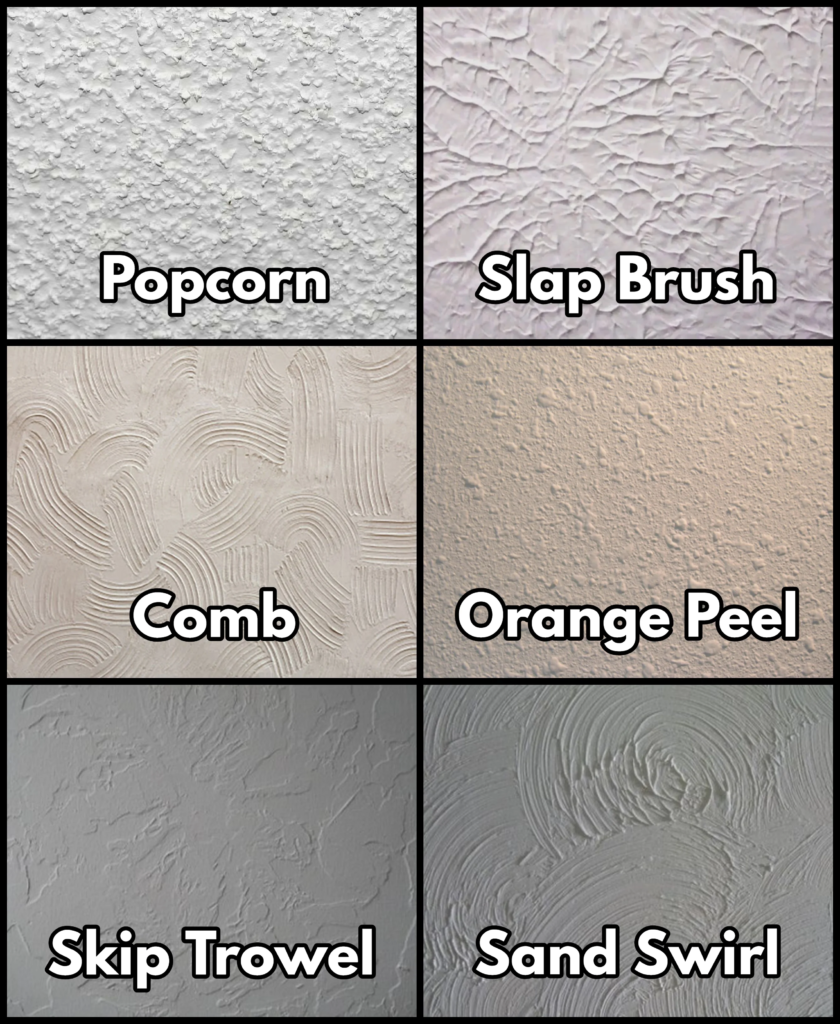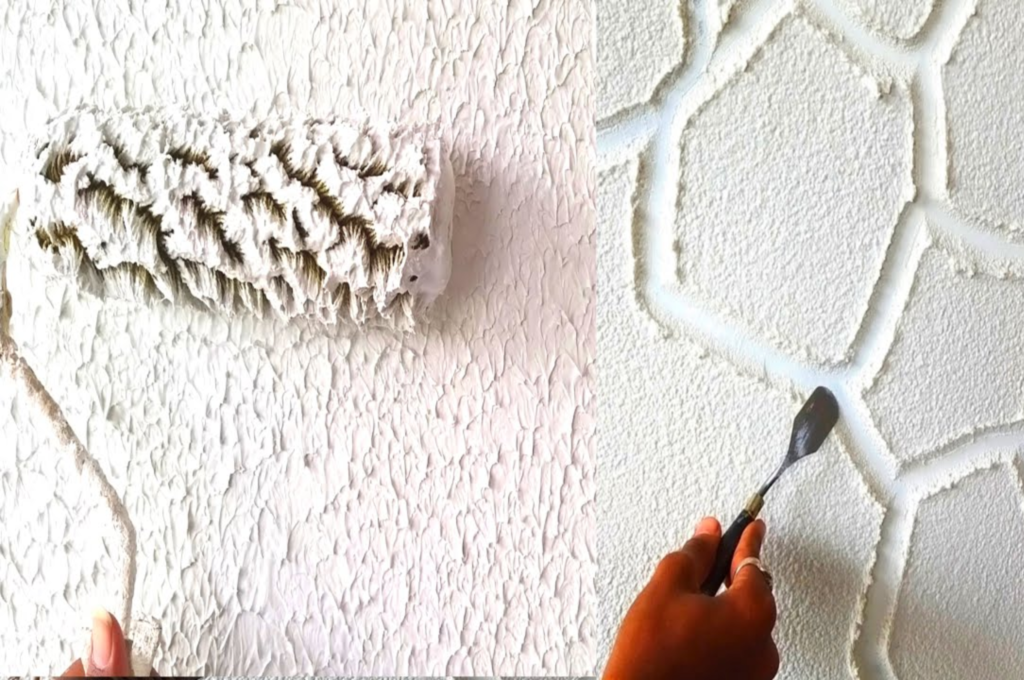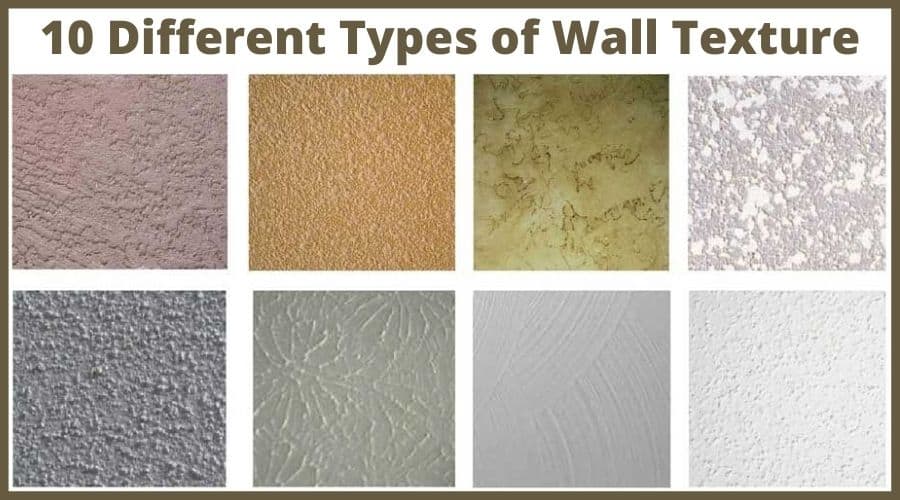Textured Wall Paint guide
What is Textured Wall Paint?
Textured wall paint contains additives like sand, silica, or gypsum that create a raised or rough surface, adding depth and character to a room. It can hide imperfections and is great for accent walls or entire rooms where a tactile feel is desired.
Types of Texture Finishes
- Knockdown
A splattered texture smoothed down slightly to create a stucco-like finish.
Best for: Mediterranean or rustic themes. - Orange Peel
Subtle dimpled finish like the surface of an orange.
Best for: Modern, minimalist spaces. - Sand Swirl
Light circular motions with a brush, mixed with sand-texture paint.
Best for: Decorative and artistic styles. - Slap Brush / Stomp
Brush is “slapped” onto the surface creating floral or random patterns.
Best for: Traditional homes or eclectic rooms. - Popcorn
Heavy, bumpy texture mostly used on ceilings.
Best for: Acoustic dampening (less popular nowadays). - Brushed Suede / Faux Finishes
Mimics the look of suede, stone, or plaster.
Best for: Luxury or boutique-style interiors.

Tools You Might Need
- Texture paint (pre-mixed or additive)
- Paint roller or textured roller
- Putty knife or trowel
- Knockdown knife or drywall taping knife
- Slap brush or stomp brush
- Hopper gun (for spray-on techniques)
- Sandpaper (for prep)
- Painter’s tape and drop cloths
Application Steps
1. Prep the Surface
- Clean and patch holes or cracks.
- Lightly sand for better adhesion.
- Apply primer if needed.
2. Choose Your Texture Style
- Pick a technique and practice on cardboard before applying to walls.
3. Apply Base Coat (Optional)
- Some textures look better over a solid base color.
4. Apply Textured Paint
- Use the right tool for your texture (roller, spray gun, brush).
- Work in sections.
5. Customize the Finish
- Knockdown with a knife, swirl with a brush, or roll with a texture roller.
6. Let it Dry
- Follow manufacturer’s drying times.
7. Paint Over (Optional)
- You can apply a top coat of color once the texture dries.

Maintenance Tips
- Dust walls regularly.
- For deep textures, vacuum with a brush attachment.
- Touch up with the same tool you originally used to blend repairs.
Pro Tips
- Test first on a small wall or board.
- Don’t overwork the paint – it dries quickly!
- Use joint compound for heavier DIY textures.
- Want subtle texture? Try textured rollers instead of additives.
Pros and Cons of Textured Wall Paint
Pros
- Heavy textures like popcorn or knockdown can help absorb sound in a room.
- Works beautifully as a feature element in living rooms, bedrooms, or hallways.
- Often more resistant to scuffs, chips, and minor wear and tear.
- Wide variety of finishes: from subtle orange peel to dramatic slap brush or faux stone.
- Creates visual interest and a unique aesthetic that plain walls don’t offer.
- Covers cracks, dents, and uneven drywall much better than flat paint.
Cons
- Textured paint and tools are generally pricier than flat paint and rollers.
- Matching texture when doing touch-ups can be a challenge.
- Some styles (like popcorn or heavy slap brush) can feel old-fashioned if not done right.
- Removing textured paint often means sanding, scraping, or even replacing drywall.
- Dust and grime settle into crevices, making it tricky to wipe clean, especially in kitchens or high-traffic areas.
- Requires more effort and skill than regular painting—mistakes are harder to fix.

FAQs
Can I apply textured paint over existing paint?
Yes. Just make sure the surface is clean, dry, and properly prepped. Glossy paint should be lightly sanded or primed for better adhesion.
Can I paint over textured walls with regular paint?
Yes, but the texture will remain. You’ll only change the color. If you want a smooth surface again, you’ll need to sand or skim coat the wall first.
Do I need special tools to apply textured paint?
Usually, yes. Depending on the texture style, you may need:
Textured rollers
Trowels or putty knives
Slap brushes
Spray guns (for knockdown or popcorn)
What type of paint works best with texture?
Use thicker latex paint or paint specifically labeled as “textured.” You can also mix joint compound or texture additives into standard paint.
How do I clean textured walls?
Use a vacuum with a brush attachment for dust.
For light stains, gently clean with a soft sponge and mild soap.
Avoid abrasive scrubbers—they can damage the raised texture.
How long does textured wall paint take to dry?
Drying time depends on the product and thickness but generally:
Touch-dry: 1–4 hours
Fully dry: 24–48 hours
Check the label for specifics.
Can I apply texture myself or should I hire a pro?
You can DIY many textures (like sand swirl or orange peel) with the right tools and patience. More advanced or spray-on textures (like knockdown) may be easier for professionals.
Is textured paint suitable for bathrooms or kitchens?
Yes, but choose wisely. Go with mildew-resistant paint, and avoid very deep textures in areas with high humidity or grease buildup—cleaning can be tough.
READ ALSO: Black accent wall living room? Some tips and best ideas
Hello!
I am Ann Armstrong.
The kitchen is the universe of the home.
The beautiful furniture and amazing design of the dining room have always inspired me.
All the best ideas for transforming the kitchen throughout my life were born from
the greatest difficulties. And I know that’s what makes my projects special.




Leave a Reply